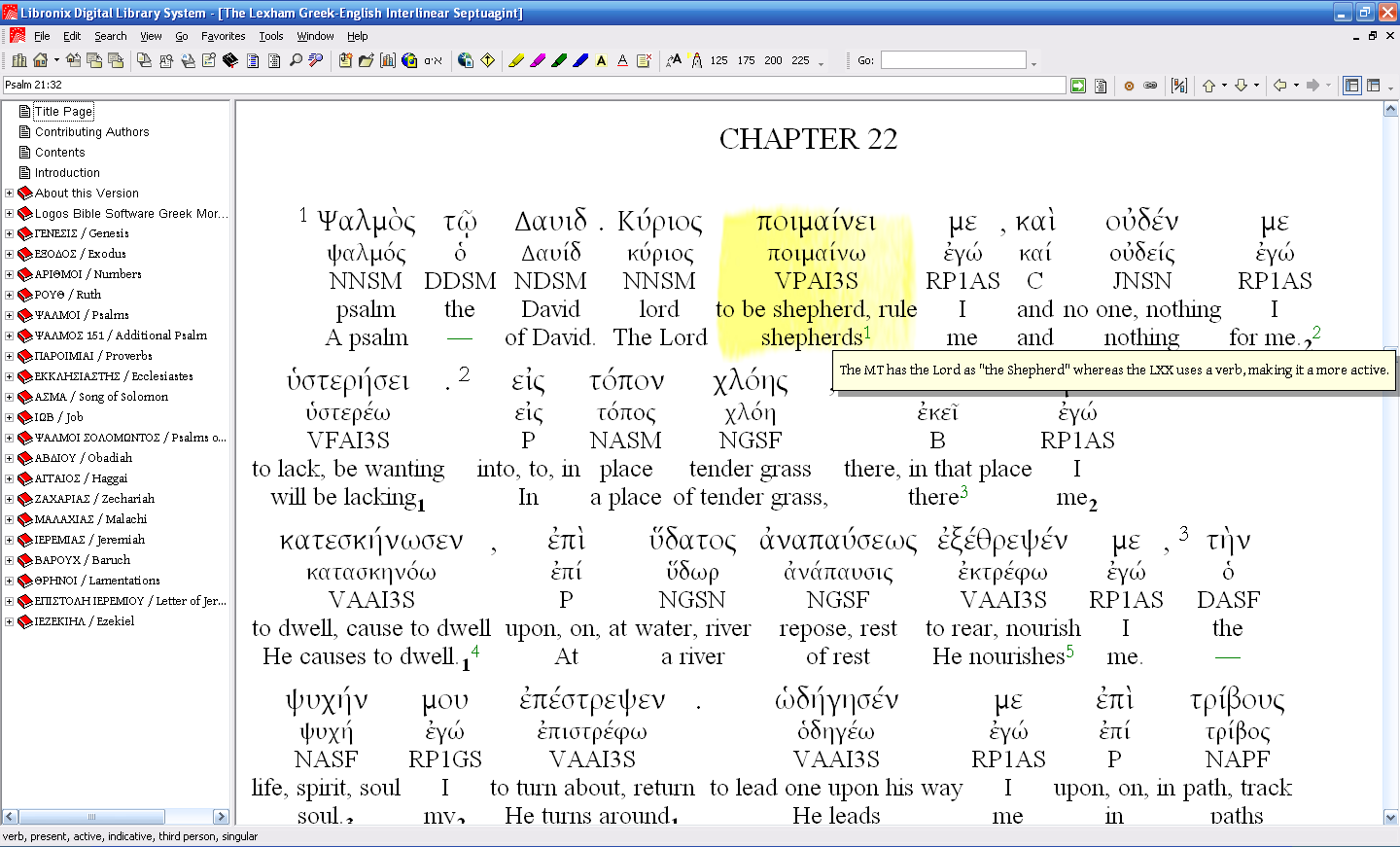 About four hours ago, I downloaded The Lexham Greek-English Interlinear Septuagint, edited by Randall Tan. A Logos employee emailed, “I believe you are the first person outside of Logos to get it.” Cool. The product is projected to ship on November 24, so the pre-pub special ($109.95) will soon elevate to a sale price ($122.95), so now is the time to lock in on the best price.
About four hours ago, I downloaded The Lexham Greek-English Interlinear Septuagint, edited by Randall Tan. A Logos employee emailed, “I believe you are the first person outside of Logos to get it.” Cool. The product is projected to ship on November 24, so the pre-pub special ($109.95) will soon elevate to a sale price ($122.95), so now is the time to lock in on the best price.
You can get a decent overview of this LXX by reading the product page.
Here are some thoughts after playing with my new toy/tool:
1. Useful format
Here’s a screen shot of the beloved Psalm 23 (chap. 22 in the LXX). (Click the image to enlarge it. Note that I highlighted one of the words and hovered my mouse over one of the notes to make the floating box appear.)
It includes five components:
- LXX
- lexical form
- morphological tagging
- lexical value, i.e., “a gloss of the lexical or dictionary form of the word” (“What does this word mean?”)
- fresh translation using a formal equivalent method (“What does this word mean here?”)
2. Quality contributors
They’re listed here. Very impressive. First-class.
3. Incomplete product
This is a beta edition. The product page explains,
As with the Lexham Hebrew-English Interlinear Bible, portions of the Lexham Greek-English Interlinear Septuagint will be released periodically, as different sections of the work are completed. Registered users of the Lexham Greek-English Interlinear Septuagint will be able to download updates as they are made available over the course of the project.
4. A word about interlinears
An interlinear can be a crutch that is actually unhelpful in the long-term, but interlinears can be useful tools, especially when one is studying a thorny passage. Tools are useful when people use them correctly. A hammer can do a lot of damage in the hand of a two-year-old boy in his grandma’s non-child-proof home (!), but the same hammer can shingle a roof in the hands of a skilled workman. Interlinears are not short-cuts to mastering Hebrew or Greek, but they can make Bible study more efficient at times.


Andy, you know, you can also always turn off the interlinear line in Logos interlinears as well and use it as just any other morphologically tagged text.
Do you know of any hardcover interlinears of the Septuagint (Greek & English)?
Hey, Nick. I’m sure they exist, but I’ve never used one.